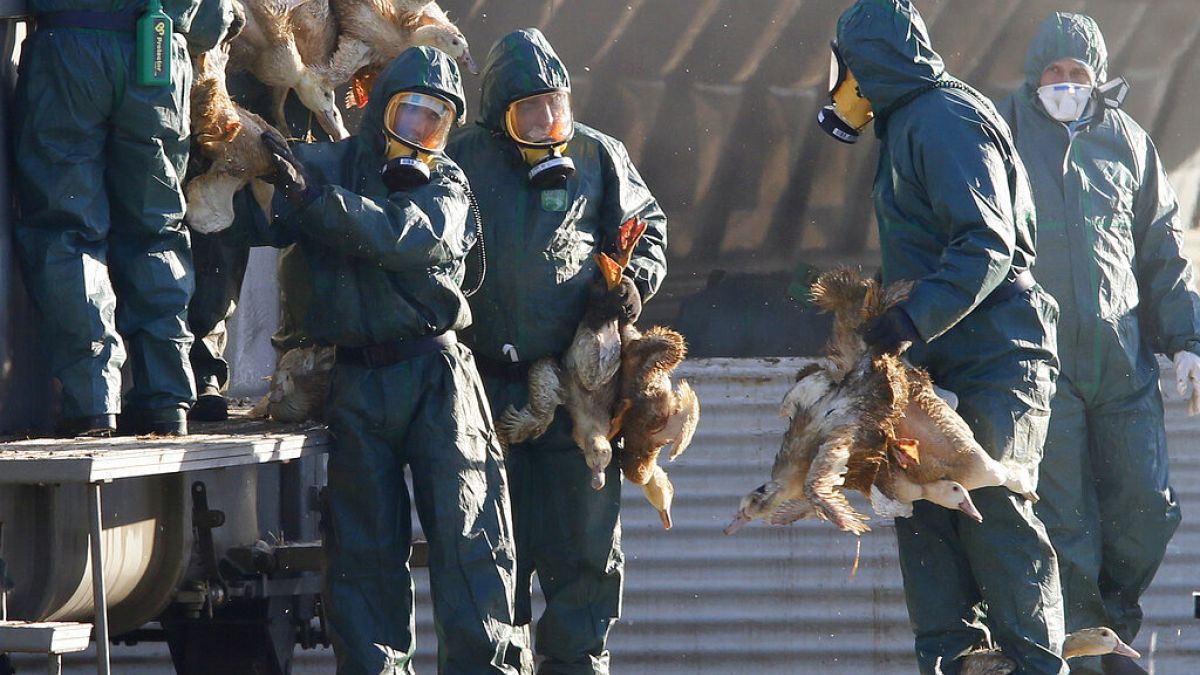While the number of avian influenza outbreaks has decreased in Europe, health and food safety authorities recommend increasing surveillance given bird migrations after the summer.
“There is reason for increased awareness but not for increased concern,” said Pamela Rendi-Wagner, director of the European Centre for Disease Prevention and Control (ECDC) in a statement, adding that it was important to stay alert and proactive as “this threat to human health should not be underestimated”.
While several outbreaks of avian influenza have been detected on farms around the world – with recent reports coming from farms in the United States – transmission to humans is still rare and limited to those in close contact with infected animals and contaminated spaces.
Avian influenza is a highly contagious viral disease that occurs mainly in poultry and wild water birds. It can be high or low pathogenic (HPAI/LPAI) depending on its ability to cause severe disease or mortality to the host organism.
HPAI is fatal to domestic poultry and can wipe out entire flocks in a matter of days, whereas LPAI strains typically cause few or no signs of disease.
The European Food Safety Authority (EFSA) reported that the HPAI epidemic was most observed in terms of the geographical spread of poultry outbreaks and the number of dead wild birds. The agency also noted an increase in the range of species affected by the virus.
As of the latest data available on 20 June, 14 new human cases with avian influenza infection have been reported from Australia, China, India, Mexico, United States and Vietnam. According to the reports, most of the cases were exposed to poultry or live poultry markets.
Both ECDC and EFSA stress that despite these human infections – none in the EU so far – no human-to-human transmission has been reported.
However, the agencies warn that sporadic transmission to humans is likely to continue among those exposed to infected animals if protective equipment isn’t used appropriately.
Based on these data, the ECDC has issued recommendations to increase vigilance and surveillance for possible cases.
The agency recommends lowering the threshold for testing for avian influenza in humans, including using a risk-based approach for exposed asymptomatic individuals and testing for influenza in any patient admitted to hospital with symptoms compatible with infection.
In June, the European Commission purchased 665,000 doses of pre-pandemic avian influenza vaccine and took an option on 40 million doses over the next four years. The first shipments of vaccine have been sent to Finland for immediate vaccination of workers at risk of exposure, such as poultry farm workers and veterinarians.
Avian influenza can be transmitted from animals to humans mainly in two ways: through direct contact with infected birds or contaminated environments or through an intermediate host, such as pigs, cows, foxes or sometimes cats living on farms.
The European Food Security Authority reported that there is no evidence that avian influenza can be transmitted to humans through the consumption of contaminated poultry products.

